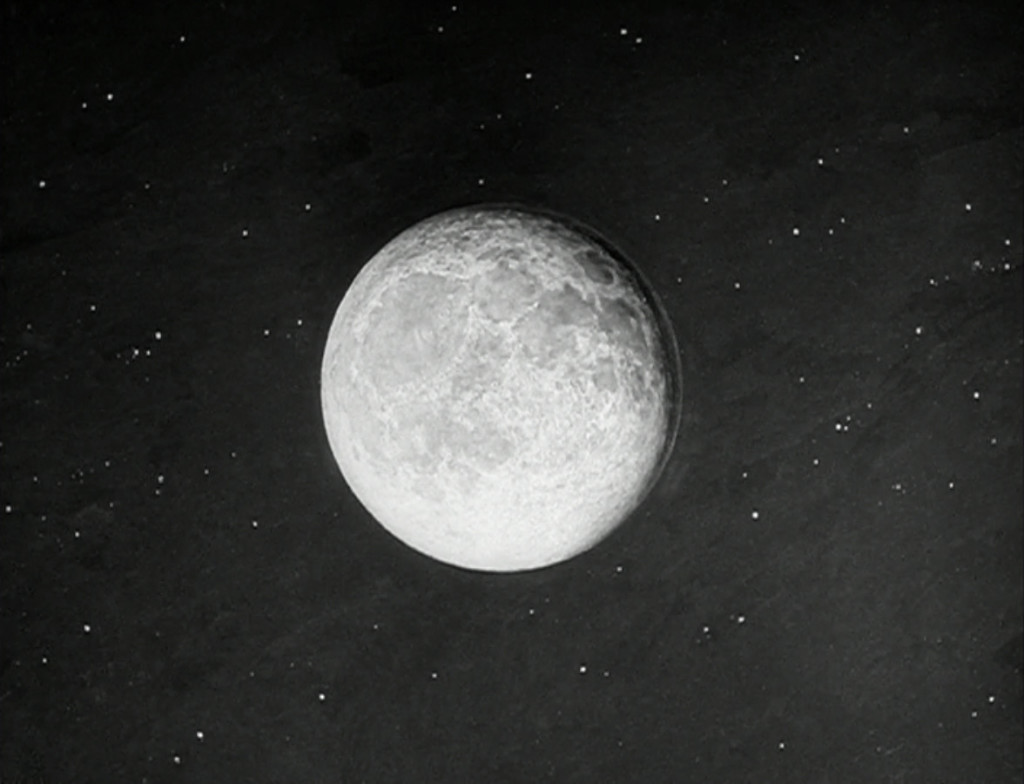
From a perspective traditional to cybernetics and information theory, the necessary condition that foregrounds any act of mediation is separation. To communicate, it is presupposed that the entity that transmits information is discrete from the entity that receives it. By initiating the act of communication, the entities involved consent to collapse, as Eugene Thacker calls it, the “prior state of disconnection” that articulates their separation.[1] Thus it is that as I write this essay I am myself, Elliott Mickleburgh. The year is 2015 and I am 24 years old in the Gregorian calendar. I wrote this essay sitting in libraries and hotel lobbies in New York City, where I live, although some of the research was done back in Chicago. Perhaps you are much older than me, living somewhere else. Or maybe you’re also in your mid-twenties in New York but you were born in 2063. We probably have differing familial and cultural heritages that to varying degrees have conditioned our basic worldview. It’s likely though that we share some common interest in media studies, philosophy, art, and metamodernism.
This brief autobiographical tangent is intended to demonstrate how the separation present at the outset of communication can be variably registered. The variable of separation this essay is invested in is one that can subsist outside of human thinking but is nonetheless almost impossible to remove from cognition. This difference is space. The contortion of space via communication is indeed strange. As we communicate, space appears to the mind as having been mitigated by a field of telepresence. Truthfully though, the physical space between communicants is more or less static, creating a discrepancy between one’s technologically influenced perception of reality and reality as it is in itself. For example, when I speak to my friends in Chicago on the phone, I feel the physical distance between us shortened but in reality there is still around 1000 miles between us.
How does one confront this bizarre discrepancy between the thought of telepresence and the actual existence of space, a discrepancy always at the heart of mediation? There’s no single answer to this. Rather, each historical epoch seems to concoct unique solutions. Modernism, for instance, adored the capacity of telepresence to reshape space artificially. The acts of exploring and territorializing were paramount to modernity’s forward drive of progress. Yet such acts of physical movement were always complicit with an equal and opposite depletion of energy and resources. Luckily, the field of electronic mediation developing at the outset of the 20th century seemed to promise supremely efficient mechanical systems not just of communication but also of motion itself. To communicate then was to maximize an economy of movement: one could traverse the globe in a realm of images with a reduced cost of actual energy. Media objects like the photographic image or the radio broadcast provided a beneficial paradox of modern speed without exertion, dynamism without exhaustion.
The postmodern era was more skeptical of the distortion of space via mediation. The outward-bound transmissions of modernity had established a network of data careening across the globe at imperceptible speeds. For the postmodern communicant, mediation was no longer an act of crossing lengths of space to metaphorically arrive somewhere. Now the mediating subject was always already plugged in to a network of information that turned here into everywhere instantly. To conceptualize a space as a single unit of territory with discrete boundaries differentiating it from other spaces while simultaneously perceiving that same space to be equal to the set that contains all mediated spaces is a logical contradiction. That kind of dismantling of truth could set any communicant into a paranoid frenzy. Don DeLillo describes something like this in a rather cynically comedic passage in his novel White Noise in which the protagonist Jack Gladney and his son Heinrich argue over whether the weather is better perceived by the body or the media:
“Just because it’s on the radio doesn’t mean we have to suspend belief in the evidence of our senses.”
“Our senses? Our senses are wrong a lot more often than they’re right. This has been proved in the laboratory. Don’t you know about all those theorems that say nothing is what it seems? There’s no past, present, or future outside our own mind. The so-called laws of motion are a big hoax.”[2]
Of course, these are only rough sketches of how epochs have approached the paradoxes of mediation and space. While the process of mediation will always contort spatial relationships, every medium will perform this contortion with some degree of variation. As such, epochal ideas will always resolve the paradoxes of mediation on the basis of a specific medium. What the above sketches do describe fairly well, however, is how modernism and postmodernism react to the paradox of mediated space as it is found in the medium of the moving image. By the moving image, I refer broadly to any process that animates or sequences still images across a surface, accompanied by sounds or silence. The technological means of the moving image have evolved tremendously since even the end of the 19th century. The manner in which this broad category of media describes or warps space has changed vastly as it moved from the photographic experiments of Eadweard Muybridge to digital cinema’s hyperreal DLP hardware and steady increase of standardized frame rates.
The question we might ask at this point is how will metamodernism react to the ever-changing strangeness of mediating space in the moving image? This writing offers a possible answer to that query. We begin by looking at the sorts of moving image apparatuses available during the eras of modernism and postmodernism respectively. Through analyzing these devices abstractly and then in their application in two pieces of cinema, we will come to a more thorough understanding of how mediated and actual space were confronted by technology and artistic conventions in the two epochs. From there we may plot the contours of a metamodern oscillation and find that shape’s expression in a contemporary video artwork.
Let us begin this investigation with the moment at which the moving image fused with the cultural logic of modernism in cinema. We could conceive of the filmic medium in the early 20th century as a fluctuation between abundances and deficits of information. Walter Benjamin once declared that photographic machines like the motion picture camera had the capacity to arrest reality and reveal unseen dimensions of nature to the faculties of human thinking. Techniques such as slow motion and tightly focused close-ups reveal those moments that remain unresolved by purely biological vision. As a medium dealing in what Benjamin called the “optical unconscious”, cinema at this time provided technologically enhanced and highly detailed observations of reality.[3]
But while modern cinematic media had the capacity to reveal what was previously masked by the limitations of human seeing, there were likewise qualities of these media that created scarcities in information. Since innovations like optical sound and analog color processing were still in their infancy at this time, many motion pictures remained silent and were shot and projected in the monochromatic palette of black and white film. To borrow an idea from Marshall McLuhan, we might consider these qualities as ones that register the modern cinematic medium to a particularly “cool” temperature. The desaturated and mute images of many modernist films stimulate the senses in low definition, prompting the viewer to imagine the information technologically excluded.[4]
And so the modern cinematic medium seems to vacillate between providing a satiation of data and an accompanying shortage of the same. The spectator gorges on novel information from the optical unconscious and then projects a mental image based on that new data back into parts of the moving image that are lacking in definition. In Fritz Lang’s magnificent sci-fi piece Woman in the Moon (1929), this technological aspect of modernist cinema becomes salient in the narrative structure and cinematography of the motion picture.
While ostensibly a love story, the real intrigue of Woman in the Moon lies in its narrative of intrepidity expressed through space travel. The altruistic explorer Helius (Willy Fritsch) collaborates with the unorthodox scientist Professor Mannfeldt (Klaus Pohl) to chart a voyage to the moon. While still on Earth, their efforts are challenged by a group of greedy entrepreneurs working with the spy Walter Turner (Fritz Rasp). Overcoming the obstacles posed by these villains takes place entirely on Earth before any manned spacecraft has even launched and actually occupies much of the first half of the film. It is the differences in Lang’s depiction of the moon in the first and second acts of the film that largely embodies the optical unconscious and cool temperature of modern moving images.
While the film’s narrative is still taking place on Earth, the antagonists hold a screening in their offices of stolen footage from an unmanned rocket that Helius had sent to the moon for surveying purposes. This exploratory rocket, the H32, is shown to have been equipped with teleobjective lenses and camera equipment automated by clockwork. The images of the moon’s surface recorded by the H32 are immobile photographs initially. They become increasingly more animated and detailed with the use of close-ups as the rocket draws closer to the surface. “The eye of the objective sees what no man’s eye has ever seen: the opposite side of the moon,” reads an expository title card during this scene. Areas of the lunar surface that are invisible to the human sensorium grounded on Earth are revealed via this camera that operates autonomously from human thinking. The H32 becomes Lang’s metaphor for the optical unconscious revealed by the apparatuses of cinema.
Of course, several characters in Woman in the Moon inevitably do venture forth into outer space and onto the surface of the moon. But Lang’s image of the moon is quite different during this part of the film, seen no longer through a camera but through the eyes of people. During the landing sequence we see craters on the lunar surface dizzyingly streak past the portholes of the rocket, appearing and disappearing far too fast to register. Once the rocket does catastrophically land, the voyagers emerge into a landscape that is cropped by Curt Courant’s cinematography and populated with mountainous terrain that obscures the topology of the area. As Professor Manfeldt embarks on an expedition to find water, Lang rarely reveals majestic or intricate images of the lunar landscape. Instead we see closely framed shots of figures moving across spaces with no horizon, the body often concealed by outcroppings of rock, steam from geysers, and even the boundaries of the frame. Once Manfeldt and Turner venture into a cavern, the lighting dramatically shifts into a high contrast range that renders all but faces and slivers of stone completely invisible.
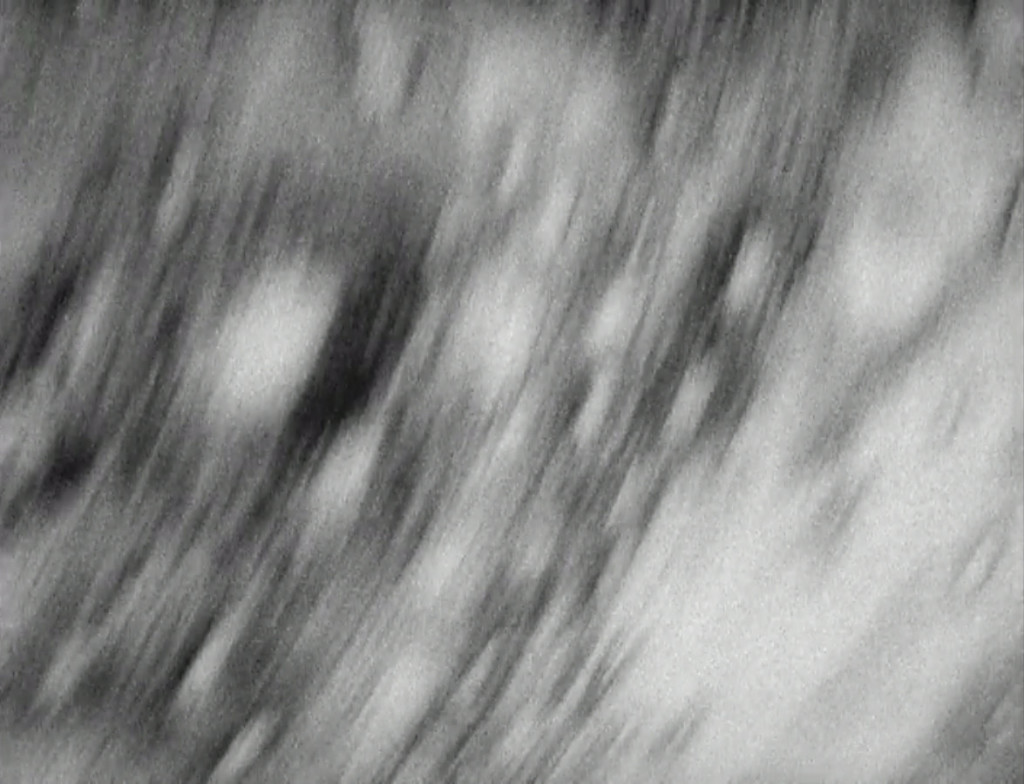
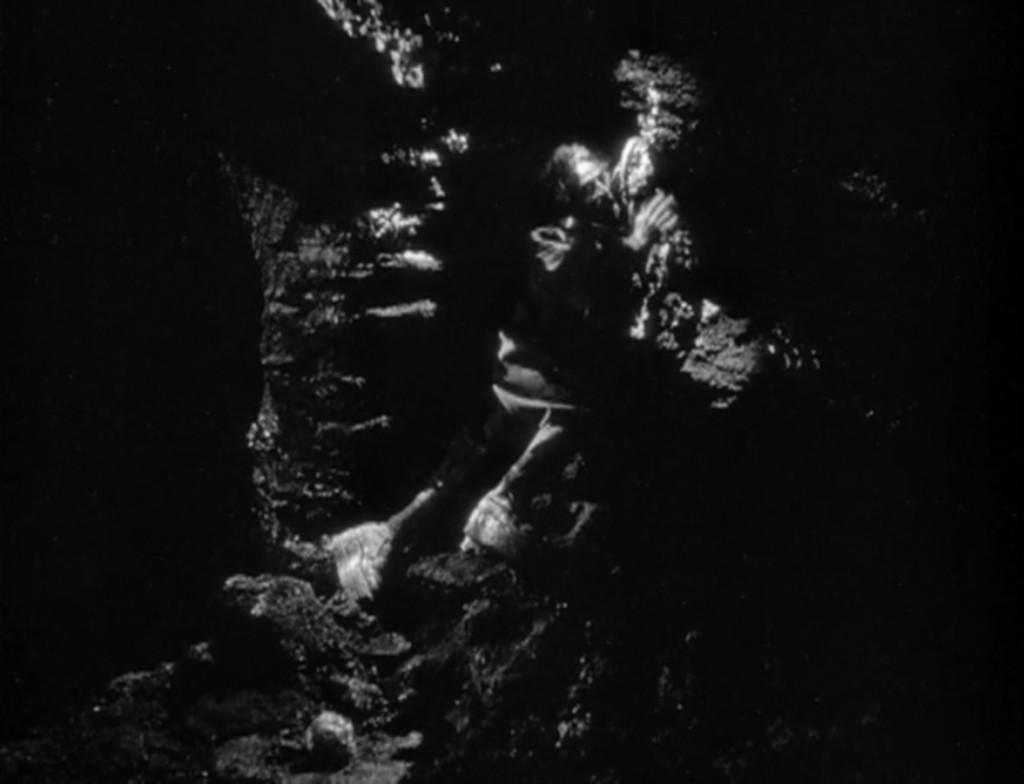
The fluctuation between these two forms of seeing in Woman in the Moon, a fluctuation bred from the technological conditions of the moving image at the time, reified key points of the modernist ethos. The spectator of this film first sees the moon through an instrument of scientific progress, our conceptualization of that astral body expanding as we absorb images transmitted back to Earth from the optical unconscious. Later, we inductively refer back to these images when human eyes explore the territory of the moon. We then project an idealized vision of the moon back into Lang’s cinematic images. The medium of Lang’s sci-fi adventure, far from being an inconsequential carrier of content, enforces modernity’s fondness for idealism, reason, and techno-scientific progress.
It is the difference between impeccable resolution and confounding irresolution that refined the medium of modern cinema into an exercise of active visioning. The mind differentiates between things that are seen and not seen, navigating the gap with the faculties of reason and producing knowledge of things in the process. In writing of theater specifically and epistemology more broadly, Aristotle once noted that the understanding of something is formed through comparing a likeness of that thing to the thing as it exists outside of aesthetics.[5] In other words, knowledge is created through an observation and analysis of the difference between the real and its image. In the moving image, technical developments eventually eliminated this measure of difference, transforming the act of viewing into an engagement in passive immersion and ushering in an era of postmodern cinema.
As the 20th century progressed, the temperature of moving image media steadily increased. Previously rarified systems like optical sound and color processing transitioned from being infrequently implemented tools to workhorses. Film theorists like Gene Youngblood prescribed even further upheaval of apparatuses, calling for the severance of moving images from their predicate media of theater and literature and proposing a new “synaesthetic cinema” able to “function as a conditioning force to unite us with the living present.”[6] Youngblood’s appeal was answered; within years, IMAX, chroma keying, CGI animation, increased use of stereoscopic projection, and so many other media additionally enhanced cinematic works. The level of information within moving images pushed farther into a state of perpetual high definition.
The moving image around this point became eerily reminiscent of the pure simulacrum. The measures of difference that accentuated modern cinema melted away as the temperature of the medium continued to heat up. The distinction between the poles of reality and its representation, between hi-def and lo-def images, and most notably between the spectator and the image itself all faded away. The viewer of postmodern cinema becomes immersed in a data saturated film that erases “distinct terms and oppositions, including that of the medium and of the real.”[7] And without these in between spaces, these areas of distinction, the faculties of reason do not produce knowledge. Quite to the contrary, the spectator is absorbed into the depths of postmodern paranoia.
There is perhaps no better film to illustrate this than another masterpiece of sci-fi, Ridley Scott’s Blade Runner (1982). Far from the optimism for movement and technology embraced in Lang’s film, Blade Runner is a tale of technological hubris. In the myopic future of 2019, the fields of biomechanical engineering and artificial intelligence have created a being indistinguishable from humans: the Nexus 6 replicant. The film’s narrative centers around four replicants who have escaped back to Earth and are subsequently hunted through the ravaged landscape of 21st century Los Angeles by the retired peacekeeper Rick Deckard (Harrison Ford). The special effects shots of this decrepit urban terrain, created through shooting models designed by Douglas Trumbull with high-resolution 65mm film stock, articulate the restricted spaces of postmodern cinema that emerge when once distinct oppositions collapse into one another.
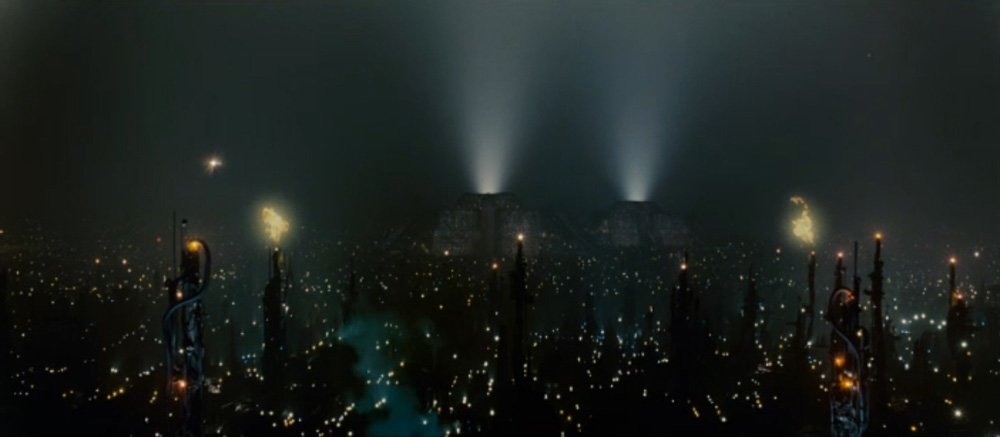
The film opens with a slow aerial scanning of an industrial landscape shrouded in fog. The composition is largely symmetrical and the distribution of architecture throughout the shot is regular. But as Deckard advances through his task of hunting down the renegade androids, the city becomes exceedingly claustrophobic. The special effects sequences depicting future Los Angeles vertically descend into a mess of multilingual neon signs, enormous LCD advertisements, and the loud yet monotonous sounds of crosswalks and zeppelins. The camera itself also becomes increasingly static and tilts backwards, creating intense distortions in perspective. These compositions make us feel the weight of all the information coursing through the metropolis bearing down on us. As Deckard begins his final pursuit of Pris (Daryl Hannah) and Roy (Rutger Hauer) through the interior of an abandoned building, he looks up to see a zeppelin previously shown advertising expatriation to the ambiguous off-world colonies mentioned but never depicted throughout the film. The aircraft is partially masked by pieces of the building that resemble prison bars. The camera is tilted so far back it seems as if the apparatus is lying supine. In this shot, a vague promise of movement is tauntingly presented as our view of space is entombed within a disintegrating and over-mediated environment.
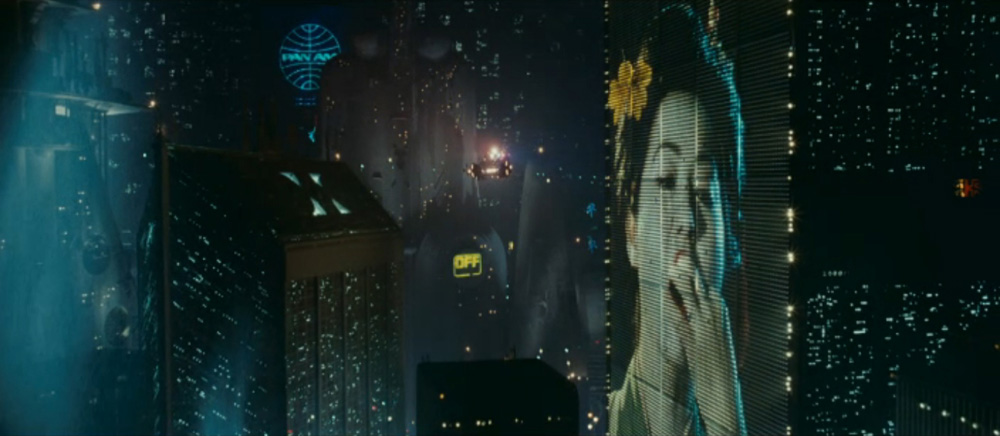
As we have seen, the communication of space and the thinking of this communication are staged distinctly by the moving images of modernism and postmodernism. The former ideology championed the capacity of these media to reveal and obscure simultaneously. The difference between images filled with and bereft of information created a qualitative gap to be traversed, the mind creating and utilizing concepts in so doing. The latter ideology preferred an unchanging state of high definition in the moving image. No measure of difference existed to create knowledge and movement. The “moving” image of postmodernism simply locked the spectator into a condition of stasis with increasing quantities of information binding representation, reality, and human reasoning closer together.
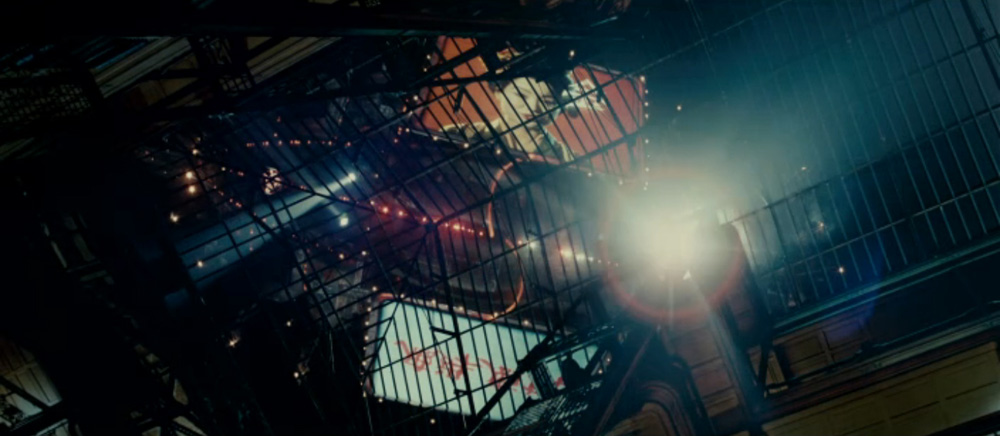
A moving image that is metamodern in this sense, is one that oscillates between the poles of movement and stasis, between states of difference and simulation. We can find just such a metamodern oscillation within a contemporary work of video art: Geoffrey Farmer’s Look in my face; my name is Might-have-been; I am also called No-more, Too-late, Farewell (2013). While not explicitly a work of cinema, the initial experience of Farmer’s video installation is not entirely dissimilar to being inside a movie theater. Upon walking into a darkened room in the New York gallery Casey Kaplan where the work was recently exhibited, one finds a large screen upon which the piece is projected. Halfway across the room is a bench and surrounding speakers. The visual component of Farmer’s work consists of a non-repeating slideshow of still photographic images. The subject matter of these pictures varies intensely. Photos of soldiers, glaciers, ballerinas, boats, flags, corpses, and countless other people and objects flicker across the screen. Some of these images are in color, others in black and white. Some feel cropped or zoomed in upon with patterns of pixels and halftones scattered across the screen while others are pristinely sharp. The audio component of the piece is similarly broad in its content. For example, one might sequentially hear shattering glass, the catch of a match on a cigarette, gunshots, and wrapping paper being torn, all mixed at varying volumes and occasionally muffled by static.
Further accentuating the breadth of this work is the montage that sequences individual samples of image and sound, drawing numerous relationships between the visual and sonic components of the piece. This montage is algorithmically driven, some unseen lines of code generating randomness that constantly shifts the speed, transitions, and synchronicity of the samples. Images flash by in a succession too rapid for the mind to grasp while other moments in the work will hold a single photograph suspended on the screen for an agonizingly long period of time. Dissolves bleed images in and out of one another but smash cuts are just as common. Both of these editing techniques are executed by the algorithm with and without an interspersing video slug of a black screen. All the while, the audio in the work moves forward with varying degrees of synchronicity. At times we may hear the chime of an elevator sound as an image of a door appears while other moments yield combinations like an air horn blaring seconds into the projection of a photo depicting a horse.
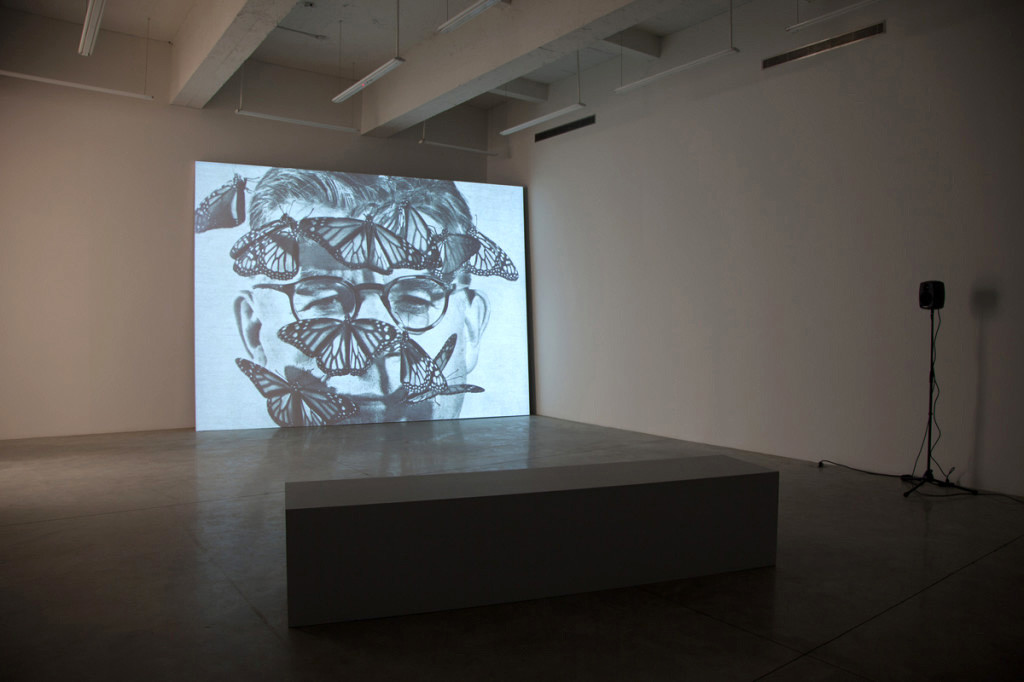
What we are essentially confronted by in Look in my face; my name is Might-have-been; I am also called No-more, Too-late, Farewell is a stream of subject matter that is at odds with the montage that arranges it. The samples of image and sound initially seem to be indifferent to one another in so much as that no idea or organized set of ideas can filter the content into meaningful subsets. The montage meanwhile seems replete with difference: no two outcomes of the algorithm are alike. Already we can see a kind of metamodern oscillation emerging as Farmer’s video swings from the stagnant indifference of postmodernism to the dynamic difference of modernism. This oscillation only gets more nuanced the longer one sits with the work. After awhile, one begins to recognize a vague theme in the samples. Almost all of the images and sounds in the work seem to come from a source that’s just been freshly historicized, something firmly within thinkable time but just beyond the horizon of the present moment. Suddenly we have the foundation of a concept that can either contain or displace content, a level of difference that serves as an engine for epistemological motion. The montage undergoes a similar shift. We eventually realize that every seemingly variable piece of editing is actually just an iteration of the algorithm that guides the montage as a whole. Every untimely fade to black, every moment of synchronicity, is the outcome of one idea expressed computationally in some invisible script. There is no edit in this piece that is outside of that idea, we see. All these gestures of montage are different but ultimately indifferent in that they are repetitions of only one concept.
So just what kind of experience of space do we have when in communication with this metamodern moving image? That is to say, what kind of movement do we feel when the difference and indifference between things is highly malleable, always fluctuating? In Farmer’s piece at least, there are times when difference seems to win out and we feel a propulsive kick moving us towards the telepresence of some image or sound. And then there are the moments when we become acutely aware of the immediate space of the gallery, those moments when the artwork becomes so indifferent as to cease communicating. We feel the exuberant motion of modernism and the crippling stasis of postmodernism skittishly bounce us around real and imagined spaces, never traveling in great forward leaps but not staying put for long either.
Actually, we feel the separation between ourselves and another move back and forth like this in another kind of communication: romance. It’s particularly like a relationship that’s hiccupping through its first interactions. When two are initially drawn towards one another, they glide from encounter to encounter. Each phone call, text message, coffee and ice cream, each date is the catalyst for the next. But all the while on the train ride home, each one fantasizes of a future spent with the other. Depthy is the manner of such a connection.[8] I invoke this sentimental analogy to stage a final remark. Quite simply, communication with the metamodern is neither efficient nor futile. Like love, such an engagement is flirtatious. We slowly come closer to a fulfillment of desire that is thankfully always out of reach, making the movement there all the sweeter.
[1] Thacker, Eugene. “Dark Media.” In Excommunication: Three Inquiries in Media and Mediation. Chicago: University of Chicago Press, 2013. pg. 89.
[2] DeLillo, Don. White Noise. London: Picador, 1986. p. 26.
[3] Benjamin, Walter. “Little History of Photography.” In Selected Writings Volume 2: 1927-1934, ed. Michael W. Jennings, Howard Eiland, Gary Smith, trans. Rodney Livingstone. Cambridge: Harvard University Press, 1999. pg. 512.
[4] McLuhan, Marshall. Understanding Media: The Extensions of Man. New York: McGraw-Hill, 1964.
[5] Aristotle. Poetics, trans. S.H. Butcher. New York: Hill and Wang, 1961.
[6] Youngblood, Gene. Expanded Cinema. New York: E.P. Dutton, 1970. pg. 82.
[7] Baudrillard, Jean. Simulacra and Simulation, trans. Sheila Faria Glaser. Ann Arbor: University of Michigan Press, 1994. pg. 83.
[8] Vermeulen, Timotheus. “The New Depthiness.” e-flux, 2015.
